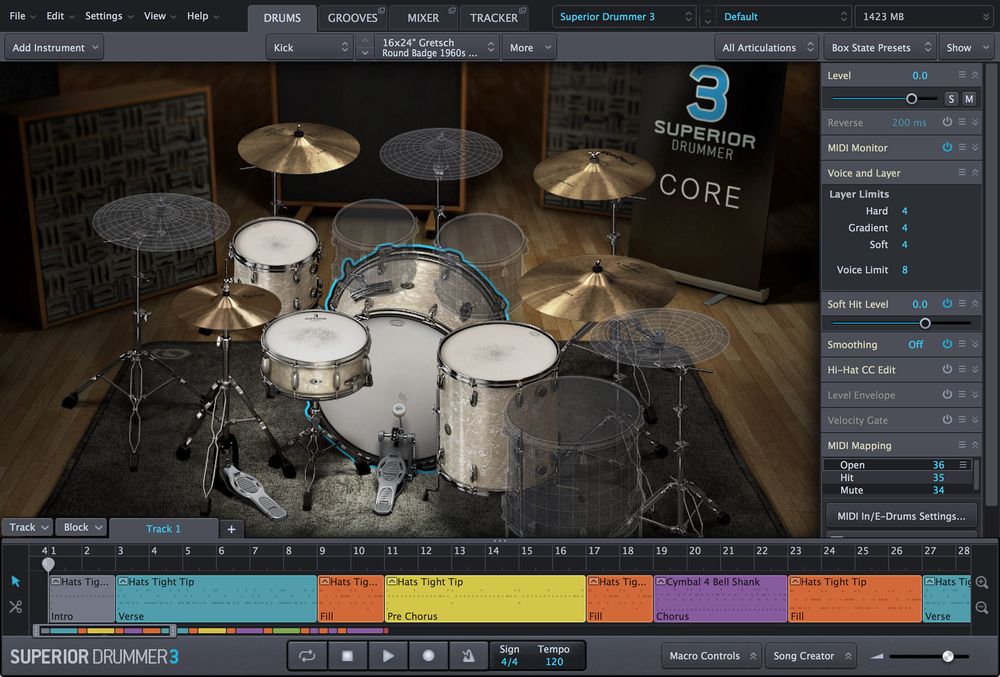6. How are software Instruments used?
A DAW track doesn't necessarily have to receive recordings or live input from an audio interface. MIDI tracks, instead, provide control data, notes, and controller values that can drive plugin instruments or software instruments. In essence, it's similar to the old synthesizer or the autonomous player piano with punch cards. The plugin instrument, therefore, converts MIDI notes back into audio, allowing you to apply audio effects to them.

Most software instruments today are in the form of plugin instruments. However, there are also sound generators that don't require a DAW and can work as standalone applications, although their number is limited. For this reason, the terms "software instruments" and "plugin instruments" are often used interchangeably.
They originate from a time when computer power was scarce. In modern computer systems, you might use standalone apps for software instruments only occasionally, often for live performance to work independently of the DAW. During song production, you usually use software instruments as plugins within the DAW. From there, you can record the notes played with a MIDI keyboard in the DAW's internal MIDI sequencer. The instrument plugin then reproduces these recorded MIDI notes, such as through a piano sound.
Instruments can be roughly categorized into two types: software synthesizers and sample instruments, although their boundaries are increasingly merging. Software synthesizers typically generate sound mainly through algorithms and parameters set within the plugin's graphical user interface (GUI), similar to their hardware counterparts. In recent years, software synthesizers have made significant progress in their sound quality. The old notion that software sounds cold and sterile is no longer applicable. Modeling analog synthesizers with all their "electronic imperfections" has become a trend, as people have come to appreciate the subtly modulated and unsterile sound.
Sample instruments have also evolved significantly in recent years. Samples are essentially small recordings, primarily used to realistically simulate acoustic instruments, achieved through skillful playback or composition of these individual recordings. For instance, each key of a piano can be recorded and then played back to create the impression of real piano play.
In practice, different recordings are used for each note to account for factors like key velocity and pedal usage. This can result in a large number of recordings that need to be seamlessly pieced together. Modern sample instruments provide a graphical user interface (GUI) for this purpose, which often doesn't display all the individual recordings but rather essential controls to vary nuances or sound color.
The practicality of these instruments is paramount. Especially, sample libraries of classical orchestral instruments like strings, brass, and percussion consistently strive for authenticity and quantity of samples used – sometimes requiring terabytes of storage space!
Moreover, there are instruments and effects that provide space for your own samples. These instruments are typically more about extreme manipulation and transformation rather than realism, such as in granular synthesis.
Twoja osoba kontaktowa
Lista produktów
-
Oprogramowanie Audio
-
Sample i Instrumenty Wirtualne
-
Soundlibraries






